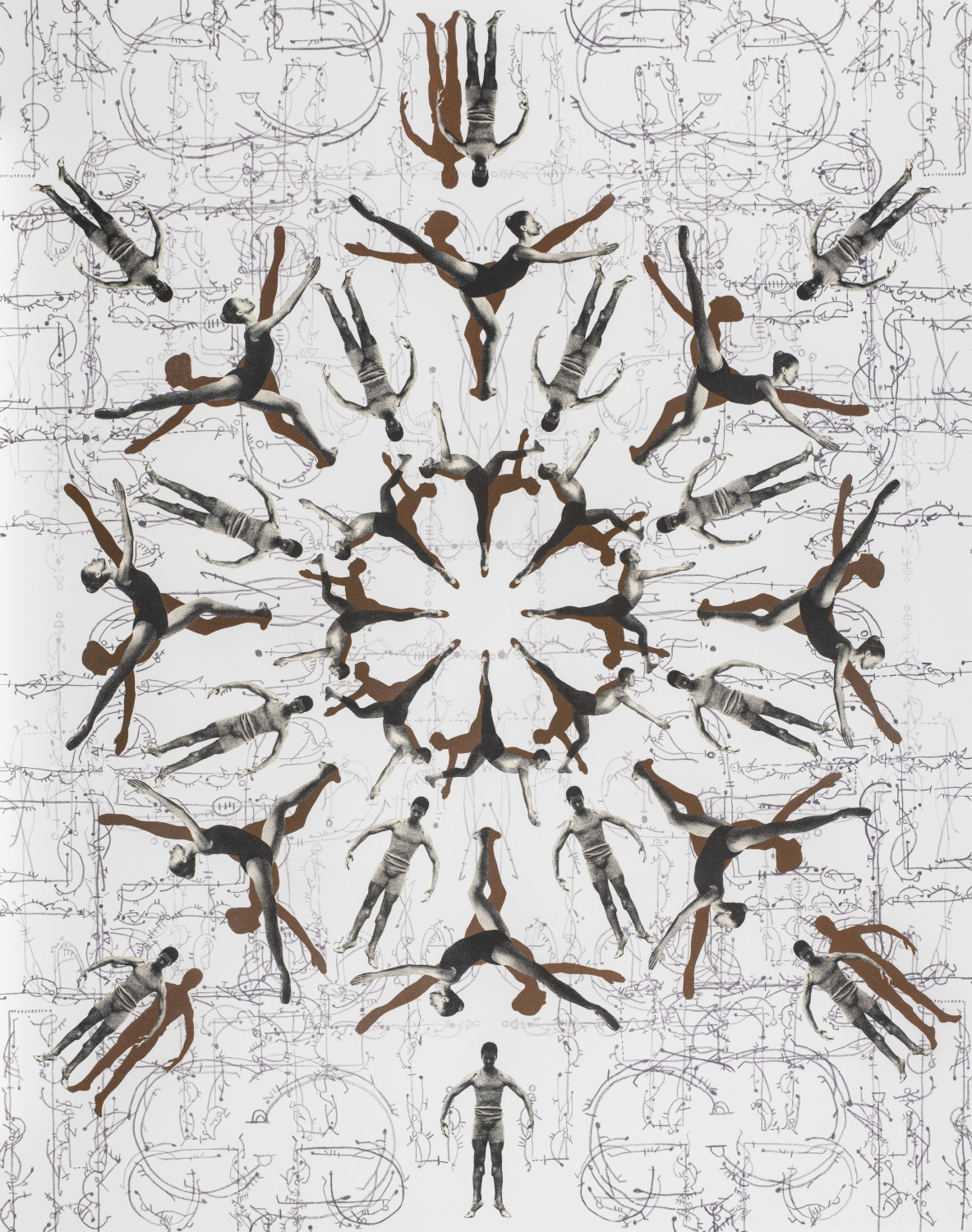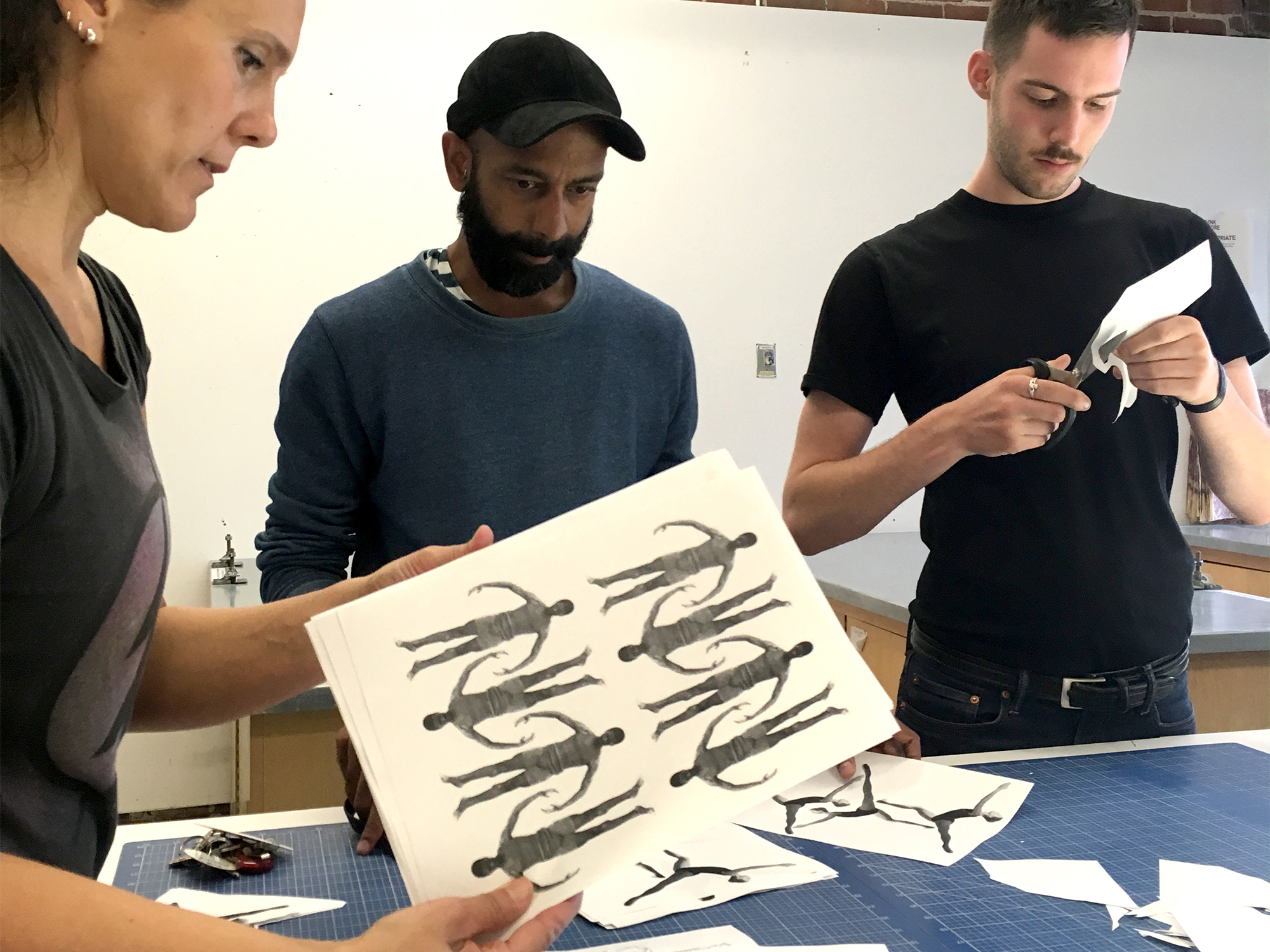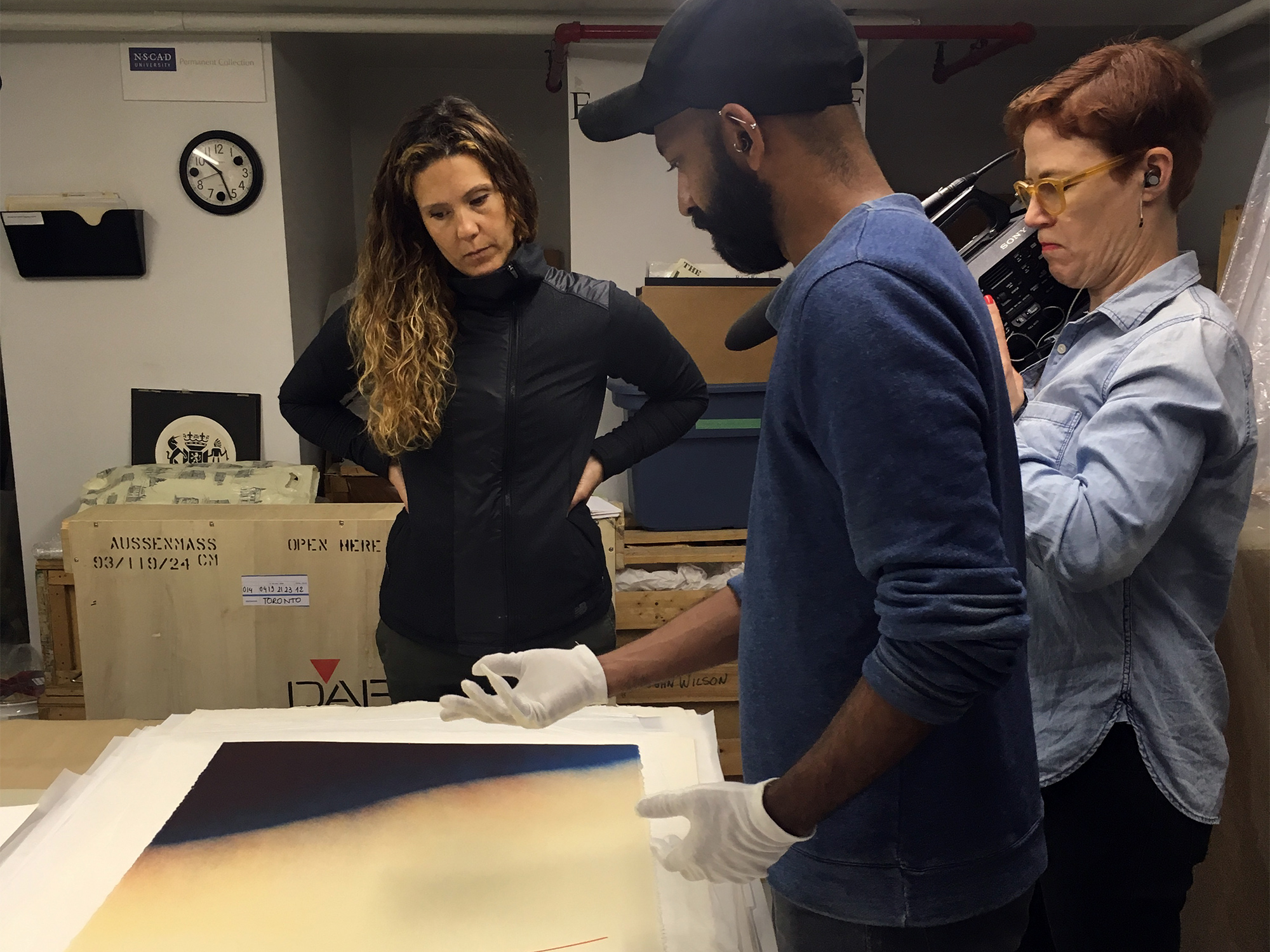Description
In June of 2017 Brendan Fernandes became the first artist to print with the NSCAD Lithography Workshop after an almost 40-year hiatus for the program.
Born in Nairobi, Kenya in 1979, Brendan immigrated with his family to Newmarket, Ontario in the late 1980s. In Canada, Brendan trained as a dancer and later as a visual artist, receiving degrees in fine art from York University and the University of Western Ontario.
Brendan went on to participate in the esteemed Independent Study Program of the Whitney Museum, where he trained with influential artists and theorists such as Yvonne Rainer, Okwui Enwezor and Ron Clarke in New York City. With the Whitney Program, Brendan’s attention turned critically towards his cultural background and migration experience. His works became focused on notions of provenance and authenticity. In some of his most poignant works from this period, Brendan recalls his experience of forgetting his native Swahili and sympathizes with museum-bound African objects who have lost a language of their own: dance.
Dance and the linguistics of dance have since become central to Brendan’s practice. In recent years Brendan’s work has revisited his past training as a dancer, becoming increasingly collaborative and process driven, making him a natural fit for the collaborative process of the revived Litho Workshop.
Working in the archives of the NSCAD Lithography Workshop, Brendan selected prints from Sol LeWitt, Garry Neill Kennedy and Vito Acconci, voicing an interest in the “choreography of the print studio” behind each work. In Acconci’s “Bite Marks” and GNK’s “4th Grade Class” he found inspiration in how each work tests the body’s ability to recall and record information. In LeWitt’s “Using a black, hard crayon, put fifty small dots at random, over the surface of the stone. Then connect each dot with a straight line. Print the result in four colours (yellow, black, red, and blue) by turning the stone a quarter turn for each colour” he found the gesture (rotation) that would become the foundation for his own print.
In LeWitt’s lithograph a stone records a single image, which (as its title describes) is printed in four colours, and rotated 90 degrees between each pass. The process results in a radial composition and unexpected new geometries derived from a specific choreography laid out by the artist. What the print reveals is the process of its own making: a turn that Fernandes emulates in his dance performances, where the labour and hierarchies behind the gestures often become the subject of the work.
Although Fernandes utilizes LeWitt’s minimalist gesture as his point of departure, his own print is rife with personal and bodily associations that complicate its story. In place of LeWitt’s graph of carefully measured lines, the first image rotated in Brendan’s print is a hand-drawn pattern of dance notation: an imperfect language for recording choreography. Atop this, Fernandes’ rotates an array of ballet dancers’ bodies and silhouettes. But the array of dancers is incongruent as well. A body or silhouette is present for each of the 49 victims of the Orlando Shooting, an attack on a gay nightclub in Florida which took place exactly one year prior to Brendan’s time at NSCAD. Further, the bodies present are mixed raced, responding both to contemporary conversations around racial inclusion in Ballet and the fact that the Orlando Shooting coincided with an event hosted for Black and Latinx communities.
Fernandes’ work pulls our contemporary social and political moment into its spiral; emulating an experience of multi-layered identity in his print, and drawing out new connections with LeWitt in the process. Fernandes highlights LeWitt’s interest in dance and reinterprets LeWitt’s repetitive gestures and tightly controlled parameters as locating, rather than masking, the labour and bodies behind them. In this way, he imagines his print in dialogue with LeWitt: that it reveals in the same breath as it adds, layers and complicates.
—Ryan Josey
Brendan Fernandes is an internationally recognized Canadian artist working at the intersection of dance and visual arts. Currently based out of Chicago, Brendan’s projects address issues of race, queer culture, migration, protest and other forms of collective movement. Always looking to create new spaces and new forms of agency, Brendan’s projects take on hybrid forms: part Ballet, part queer dance hall, part political protest…always rooted in collaboration and fostering solidarity.



